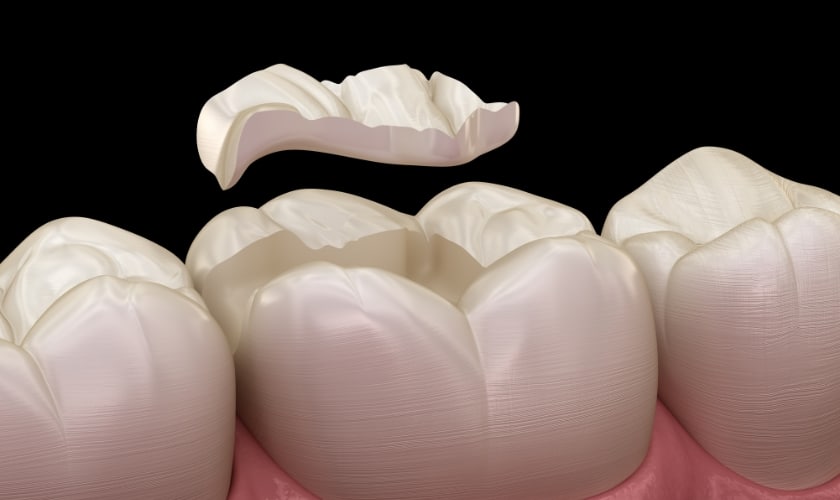Role Of Dental Sealants In Preventing Cavities
By :
Affordable Dentist | January 23, 2024
In the realm of dental health, where every smile tells a unique story, an often-overlooked hero quietly plays a crucial role in preserving those stories: dental sealants. As we navigate the landscape of preventive dentistry, one cannot ignore the silent guardianship these thin layers of protection provide. This blog explores the significance of dental sealants and their role in cavity prevention.
Understanding Dental Sealants
These are thin, protective coatings applied to the chewing surfaces of molars and premolars. Consisting of plastic material, these sealants create a barrier, preventing bacteria and food particles from settling into the grooves and fissures of the teeth.
The Science Behind Cavities
Cavities, also known as dental caries, develop when bacteria in the mouth produce acids that erode the enamel. The deep grooves on the chewing surfaces of back teeth are particularly susceptible to this bacterial invasion.
Application Process
The application of dental sealants is a quick and painless procedure. The dentist thoroughly cleans the teeth, applies an acid solution to roughen the surface for better adherence, and then brushes on the sealant material. A special curing light is used to harden the sealant, creating a durable protective layer.
Longevity of Dental Sealants
The longevity of dental sealants is a crucial factor in understanding their effectiveness as a preventive measure against cavities. Dental sealants in Grand Prairie, TX, are durable and need regular monitoring to ensure sustained protection.
However, it's important to recognize that while dental sealants are robust, they are not permanent. The typical lifespan of sealants can vary based on factors such as oral hygiene practices, dietary habits, and the specific characteristics of the sealant material used.
Factors Influencing Longevity
Oral Hygiene Practices: The effectiveness and longevity of dental sealants are closely tied to an individual's oral hygiene habits. Regular brushing, flossing, and maintaining a healthy oral care routine contribute to the extended lifespan of sealants by minimizing the risk of plaque buildup and maintaining optimal oral health.
Sealant Material and Application Technique: The type of sealant material used and the precision of the application technique also play a role in determining how long the sealants will provide protection. High-quality materials and meticulous application contribute to a longer-lasting barrier against cavity-causing factors.
Reapplication as a Preventive Measure: Although these are not permanent, their reapplication is a straightforward process. Dentists may recommend resealing the teeth to ensure ongoing protection. This proactive approach aligns with the community's emphasis on preventive care, addressing potential issues before they escalate into more significant dental concerns.
Effectiveness in Cavity Prevention
The battlefield against cavities is an intricate one, where oral health professionals deploy a range of strategies to fortify the enamel defenses. Among these, dental sealants emerge as a potent shield, proving their effectiveness in the relentless fight against tooth decay.
However, to truly appreciate the prowess of dental sealants, one must delve into the scientific evidence and research that underpins their role in cavity prevention. The Centers for Disease Control and Prevention (CDC) stands as a steadfast advocate, asserting that school-age children without sealants are nearly three times more likely to develop cavities compared to their counterparts who benefit from this protective coating.
The Sealant Advantage
Dental sealants provide a unique advantage in the realm of cavity prevention. The application of these thin, plastic coatings over the grooves and fissures of molars and premolars forms an impenetrable barrier. This barrier, while invisible to the naked eye, is a formidable defense mechanism against the primary culprits of cavities – bacteria and food particles.
Furthermore, the effectiveness of it is not limited to a specific age group. While they are commonly recommended for children and teenagers due to the vulnerability of their developing teeth, adults can also reap the preventive benefits of sealants. The versatility of this approach aligns with the overarching goal of comprehensive oral health care.
Empirical Evidence
Research consistently attests to the efficacy of dental sealants in preventing cavities. Numerous studies highlight a significant reduction in the incidence of tooth decay in sealed teeth compared to those without this protective layer. The evidence base is robust, forming a compelling argument for the integration of sealants into preventive dental care protocols.
Although sealants are not a panacea, they contribute substantially to reducing the risk of cavities, especially in the challenging-to-reach areas of the molars. This evidence-based approach reinforces the value of it as a frontline defense in the ongoing battle against oral diseases.
Comparative Effectiveness
In the arsenal of preventive measures, dental sealants stand out for their comparative effectiveness. However, they are not intended to replace other essential oral health practices. Regular brushing, flossing, and professional cleanings remain fundamental components of maintaining optimal oral hygiene. Dental sealants complement these practices, offering an additional layer of protection in areas where traditional methods may fall short.
However, Sealants Are Not a Substitute
While these provide robust protection against cavities, they are not a substitute for good oral hygiene practices. Regular dental check-ups, cleanings, and a healthy diet complement the effectiveness of sealants.
Dental sealants in Grand Prairie, TX, play a pivotal role in cavity prevention, offering a proactive approach to oral health. Embracing this preventive measure can contribute to a lifetime of healthy smiles, especially for the younger population. As the saying goes, prevention is better than cure, and dental sealants embody this philosophy, providing a reliable shield against the silent threat of cavities.


